My 7 (+1) favorite books
Today is the World Book Day. A few months ago, I was nominated by my friend Haris to list my 7 favorite books in 7 days. At first, I was so excited about the prospect of looking back to the books I’ve read and reflecting on my favorite ones that I eagerly accepted the challenge. But then I realized that I had read so many books that I had a lot more than 7 favorites. Which ones to choose? To help make up my mind, I started reflecting on the reasons why I love reading books.
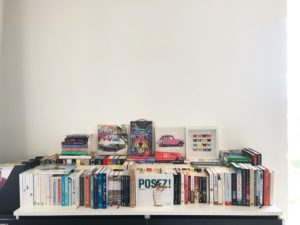
Truth be told, I’ve not always been a bibliophile and an avid reader. As a teenager, the only books I read (and thoroughly enjoyed) were the Agatha Christie novels. I remember that during those long summer holidays, I would pick one each morning and spend the rest of the day in St Mary Mead with Miss Marple, or I would follow Hercule Poirot from the streets of London to exotic destinations around the world. By the end of the day, however, the murderer had been brought to justice and I was back in Greece. This brief escape from my rather uneventful life was what drew me to reading all sixty-six Christie’s detective novels.
However, by the time I was a University student, I’d run out of reading material. Over the following years, I was slowly acquainted with new authors. Dan Brown was amongst one of them. The Da Vinci Code was a far more enjoyable book to read than my anatomy or physiology textbooks, so I eagerly followed Robert Langdon around Paris and then to London. Soon, we were on a plane from Massachusetts to Switzerland, and from there to Rome and the Vatican City. We were chasing the Illuminati in Angels & Demons.
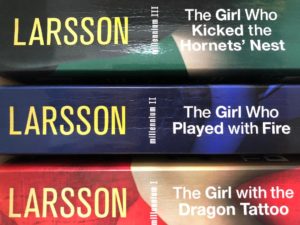
Then came Stieg Larsson and the Girl with the Dragon Tattoo. My love for reading and Scandinavia now rekindled, I started traveling to the Nordic Countries (at first through fiction, but then in real life too). I followed Lisbeth Salander and Mikael Blomkvist to Stockholm, before Camilla Läckberg took me to her home town of Fjällbacka on the west coast of Sweden. I then traveled to Norway with Jo Nesbø, before setting off for Iceland with Ragnar Jónasson, Yrsa Sigurðardóttir and Arnaldur Indriðason.
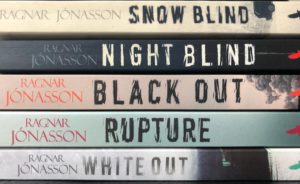
Alongside these journeys laden with victims of murder and other horrible crimes, I developed an interest in non-fiction literature. Moving to London and spending a couple of hours a day on the tube or the train was a blessing in disguise. Unread books that had been piling up for years would be done and dusted in less than a week. My daily commute soon became my favorite part of my workdays; I would now escape into the minds of wise men and women, and share their knowledge and insights on a variety of subject matters.
Reflections on traveling, reading, films & psychotherapy
Being a psychiatrist, psychotherapy is part of my work. On the other hand, traveling, reading books and watching movies are amongst my hobbies. Most would agree that books and films have at least one thing in common: there’s a story to be told. But, do they have anything in common with traveling? I believe so. When I was younger, I used to enjoy reading books at home and watching movies at the cinema to escape from my reality and its problems. Traveling had the same effect: it allowed me to escape my everyday life.
Nowadays, I think there’s much more to these three activities than a route to escape. As a screenwriting student, I learned the importance of the character arc in a story; this refers to the transformation of a character over the course of a story. At the beginning of a story, the character usually faces a problem. But to overcome this problem, they have to change. So, in most stories (either in film or literature) the character has to go through an inner journey. But it is not just the character; it is also the spectator or reader. We watch films and read books for different reasons: not only to escape, but also to improve. Not only to feel, but also to learn.
Similarly, we travel not just to visit a new place, city or country, and take beautiful pictures, but because the experience of traveling, quite like reading a book or watching a movie, allows us to learn about the world and improve as individuals. In that sense, traveling, reading and watching films have something in common not only with each other but also with psychotherapy. Psychotherapy can help us learn (about ourselves, as well as new skills) and use this knowledge and skills to improve our lives.
How to travel
In ‘How To Travel’, I read that ‘we are seeking, through our travels, not just to see new places, but also to become fuller, more complete human beings. The place we go to should, ideally, help to teach us certain lessons that we know we need to hear. Our destinations are a guide to, and a goad for, who we are trying to become. Travel accedes to its true nobility when we ensure that the physical journey can support a well-defined inner journey towards maturity and emotional health’. They add that ‘through travel you’re growing up – and into yourself’. I would argue the same is true for literature, films, and psychotherapy. In fact, the authors refer to ‘a deep noble search for wisdom and balance’ as ‘the ideal goal of art, civilization and travel’.
My 7 (+1) favorite books
Let Me Tell You a Story: Tales Along the Road to Happiness
By Jorge Bucay (original title: ‘Déjame que te cuente’)
Jorge Bucay is an Argentinian gestalt psychotherapist who has written many books in Spanish, his native language. Having read some of his books (in Greek), I cannot tell which is my favorite, but I can confidently say that Bucay is among my favorite authors. ‘Let Me Tell You a Story’ is one of his few books that have been translated into English. It consists of a good 50 chapters, each one containing a story. Bucay writes from the perspective of Demián, a young man embarking on a psychotherapy journey. Demián tells us the stories that his therapist – Jorge – told him during the therapy sessions. Not all these stories are from Bucay’s imagination; some have been inspired by and adapted from tales (old and new), poems and books. Both the individual stories and the book as a whole are inspiring and full of wisdom and take-home messages worth reflecting on.
Another strength of this book (and Bucay’s writing in general) is the simplicity in which he writes; this makes for a pleasant (and easy) read although what he writes about has really deep meaning. Moreover, even though he lives and practices in Argentina, his writings transcend frontiers and are of relevance to readers across the world, which explains his popularity in different countries. ‘Let Me Tell You a Story’ is by no means a self-help book. And, of course, is no substitute for therapy. Despite its title, it is not a shortcut to happiness. Yet, it can have therapeutic value in that it creates a space to allow the readers to reflect on their own emotional world. In that sense, like Demián, they can embark on their own inner journey and move along the arc.
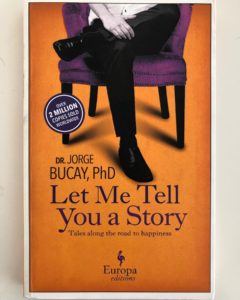
Psychology for Screenwriters: Building Conflict in Your Script
By William Indick
I first became interested in psychology as a 4th-year medical student during my psychiatry placement. Once I qualified as a doctor and started training as a psychiatrist, my knowledge of psychology significantly expanded. Having always been a cinephile, I soon became interested in the relationship between psychoanalysis and cinema, and started reading about the psychoanalytic film theory and psychoanalytic interpretations of popular (and less popular) films.
In the meantime, I realized that I wanted to tell my own stories. Although I had always enjoyed watching films as well as writing, I had never previously put two and two together. I had never thought, let alone attempted, to write a script. With my newly-found determination to master the art of screenwriting, I got myself Blake Snyder’s ‘Save the Cat!: The Last Book on Screenwriting You’ll Ever Need’. This was the first (but definitely not the last) book on screenwriting I’ve read.
A few years later, whilst still struggling to write an Academy Award-worthy script, I came across William Indick’s ‘Psychology for Screenwriters’. Suddenly, everything I’d previously read about psychology and psychoanalysis on the one hand and screenwriting on the other made perfect sense. With a background in psychology, Indick is also a screenwriter and screenwriting consultant. In this book, he discusses Sigmund Freud’s psychoanalytic theory, as well as those by Carl Jung, Alfred Adler, Erik Erikson, Joseph Campbell, Maureen Murdock and Rollo May, and illustrates how these theories and related concepts can be applied into screenwriting.
Although I am yet to write that script, I have found ‘Psychology for Screenwriters’ very well-written and extremely informative, and I would strongly recommend it to anyone with an interest in psychology and/or screenwriting.
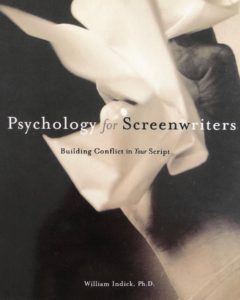
10 Mindful Minutes: Giving Our Children – and Ourselves – the Social and Emotional Skills to Reduce Stress and Anxiety for Healthier, Happier Lives
By Goldie Hawn and Wendy Holden
A year and a half ago, I traveled to California for a second time. Yet, this was the first time I visited the Last Bookstore, a large bookshop in Downtown Los Angeles selling both new and used books. With so many books available, I felt so overwhelmed that I ended up leaving without making a purchase.
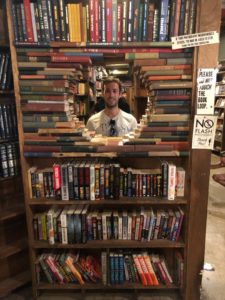
Afterwards, I headed to the nearby Blue Bottle Coffee, one of my favorite Californian coffeehouses. Located on Broadway opposite the Grand Central Market, it is housed in the Bradbury Building, which is considered an architectural landmark. I later read that this cafe is home to a unique partnership with LA’s Central Library. In fact, the entire rear wall of the cafe is occupied by bookshelves, with books donated by the Library Foundation of Los Angeles. Whilst browsing those bookshelves, I came across a blue-cover book (pun intended) by Hollywood star Goldie Hawn, which I ended up buying.
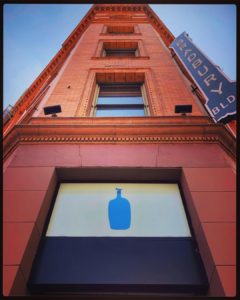
’10 Mindful Minutes’, co-written by Goldie Hawn and Wendy Holden, soon became one of my favorite books. On the one hand, it takes me back to Blue Bottle Coffee and sunny California (by the way, I believe that associating a book with a place or time is a valid reason to like it a bit more); on the other hand, it is so closely aligned with my professional background as well as my personal values.
As a Psychiatrist, I have been trained in the use of the ‘biopsychosocial’ approach or model to the assessment and management of the people that seek my help. Mindfulness is a key component of this approach. I strongly believe that such a holistic approach should not be limited to the management of mental illness, but can be part of everyone’s life, a way to optimize our mental (and physical) wellbeing.
’10 Mindful Minutes’ exemplifies this approach. Informed by neuroscience research, it follows the success of the MindUP program of the Goldie Hawn Foundation, a non-profit organization created by the famous actor. The program has been offered to thousands of children and teenagers in the US and the UK and teaches them the skills and knowledge to help them regulate their stress and emotions. The book is primarily for parents to inspire and empower them to teach those life skills to their children. As such, I would strongly recommend it to parents as well as teachers. I would also recommend it as a self-help book to anyone who wants to improve their emotional resilience and reduce their stress levels.
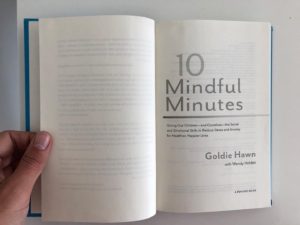
How to Change Your Mind: What the New Science of Psychedelics Teaches Us About Consciousness, Dying, Addiction, Depression, and Transcendence
By Michael Pollan
This is another book I brought back from California. I found it whilst browsing in a shop in Santa Barbara, a seaside town located north of LA. I was actually looking for presents for my friends and family, when its long title caught my attention. Being a Psychiatrist, I was immediately drawn to it.
Unlike many colleagues of mine, I don’t believe that psychotropic medication is a panacea. I strongly believe that treatment plans should not be limited to medication; treatment should be far more holistic, including psychotherapy and mindfulness alongside (or even instead of) medication. So, I was understandably skeptical about the potential therapeutic use of psychedelics (such as psilocybin and LSD) in clinical practice.
Michael Pollan’s book may not have altered my mind (pun intended), but it has, nonetheless, provided me with new information on a rather controversial (if not obscure) topic. The author discusses the history of psychedelics, research studies showing their effectiveness in the treatment of a range of mental disorders (when used in clinical settings), and the neuroscience behind their effectiveness. He specifically discussed the use of psychedelics in psychotherapy and also shares his personal experience of psychedelic journeys.
’How to Change Your Mind’ has made it in this list of my favorite books, because it has managed to somewhat shift my perspective, and encouraged me to learn more about this subject matter. In other words, it has done what I think a great book should do.
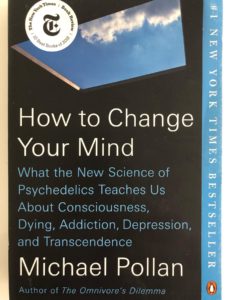
The Art of Travel
By Alain de Botton
Alain de Botton is one of my favorite authors and ‘The Art of Travel’ my favorite book of his. Inspired by his own travels and informed by the work of a selection of other writers and artists, the Swiss-born British author shares his insights on the value of traveling.
From Hammersmith in West London, where he currently lives, he takes us on a journey across the world. We fly to Barbados and to Amsterdam, we take the train to the Lake District, we spend an extended weekend in Madrid, we visit the Sinai Desert, and we stay in a farmhouse in Provence, before returning back to the UK and to the London Docklands.
In this journey, our guides are the French novelists Joris-Karl Huysmans, Gustave Flaubert and Xavier de Maistre, the poets Charles Baudelaire and William Wordsworth, the painters Edward Hopper and Vincent Van Gogh, the Prussian polymath Alexander von Humboldt, the Irish philosopher Edmund Burke, and the English art critic John Ruskin.
Unhappiness can stem from having only one perspective to play with.
Alain de Botton (from ‘The Art of Travel’)
‘How To Travel’ is another book I am particularly fond of. It is published by The School Of Life, a global organization co-founded by Alain de Botton. The book features 30 essays about traveling, whose author has not been named, but, having read both books, I suspect it is Alain de Botton.
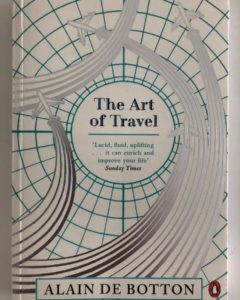
Silence In The Age Of Noise
By Erling Kagge
This was the last book I’d read, before I was nominated for the challenge of listing my 7 favorite books in 7 days. Now, that some time has passed, I still think that it is a book worth including in this list. The author, Erling Kagge, is a Norwegian explorer, writer and publisher; in this book, he reflects on the value of silence.
Kagge also travels us though literature and the arts. With the help of a selection of philosophers, writers, explorers and artists from Norway and the rest of the world, Kagge provides invaluable insights into silence.
Amongst Kagge’s compatriots sharing their wisdom, are the playwright Jon Fosse, the explorer and Nobel Peace Prize laureate Fridtjof Nansen, the poet Rolf Jacobsen and the philosopher Lars Svendsen. Other philosophers encountered in this journey include the Ancient Greeks Aristotle and Plato, the Germans Immanuel Kant and Martin Heidegger, the Danish Søren Kierkegaard, the Austrian-British Ludwig Wittgenstein and the French Denis Diderot.
We encounter famous authors and poets, such as the Japanese poet and haiku master Bashō, the American author David Foster Wallace, the English poet William Blake, and the late British author and Neurologist Oliver Sacks.
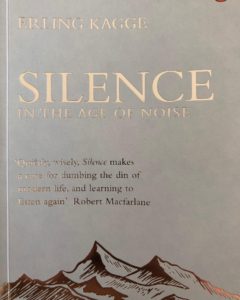
The Travelling Cat Chronicles
By Hiro Arikawa
‘The Travelling Cat Chronicles’ is the only novel that has made it into this list of my 7 favorite books. It is no secret that I am a travel enthusiast as well as a cat lover. So, when I came across the title of this book by Hiro Arikawa, I knew I had to read it. A beautifully written story, it follows a man and his cat around Japan, a country that has always fascinated me. While the protagonist embarks on a journey outward to visit friends and family in search of a new home for his beloved cat, he also re-visits his past on a journey inward.
A film adaptation was released in 2018 directed by Kôichirô Miki.
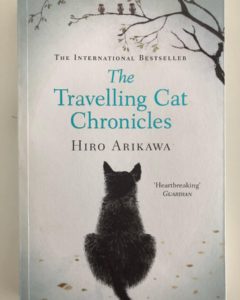
A Beginner’s Guide to Japan: Observations and Provocations
By Pico Iyer
Although I would not go as far as to say that ‘A Beginner’s Guide to Japan: Observations and Provocations’ is amongst my 7 favorite books, I have included it in this list because I think it has the best cover ever. Of course, we should never judge a book by its cover. But with a cover that sparks so much joy (to remember Japanese organizing consultant and author Marie Kondo), I had no other option but to buy the book.
The white maneki-neko (beckoning cat) on the extremely colorful cover was not the only reason for my purchase. Even though I have never been to the land of the rising sun, I’ve always been fascinated by the Japanese culture and pretty much anything else Japanese. And since this book is about Japan, I thought it would make an interesting read. Furthermore, having previously read ‘The Art of Stillness: Adventures in Going Nowhere’, a beautiful book by the same author, I was hoping that ‘A Beginner’s Guide to Japan’ would be nothing short of well-written.
British-born travel writer Pico Iyer is married to a Japanese wife and has been living in Japan for more than 32 years. In this book, he shares information and insight into the Japanese psyche and culture. His reflections are colored not only by his life in Japan, but also by many Japanese novels and other works of literature he’s read. In a nutshell, ’A Beginner’s Guide to Japan’ turned out to be not only a beautifully-written but also a very informative book about the land of the rising sun.
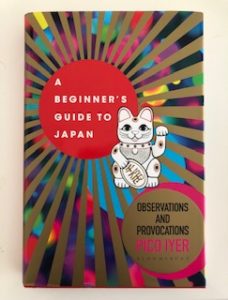
Further reading
If you are also obsessed with Japan and cats, then check out my post ‘5 (+1) Books from the Land of the Rising Cat‘.
Alex
(the Traveling Psychiatrist)